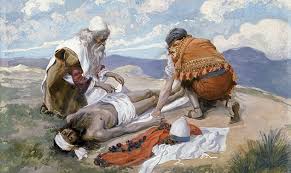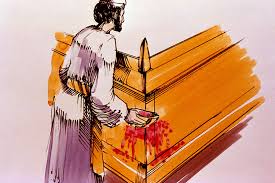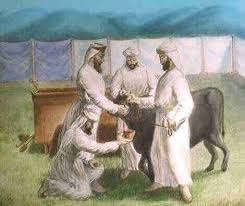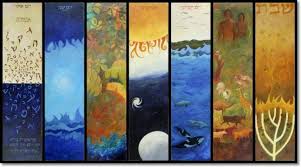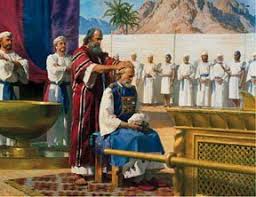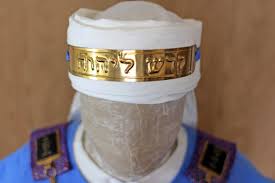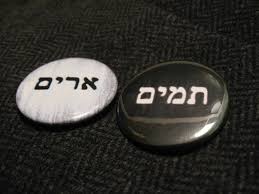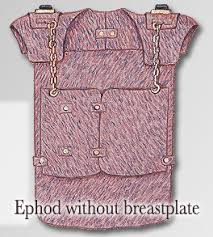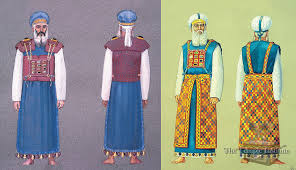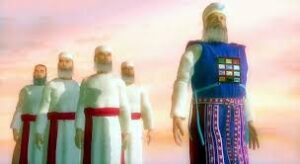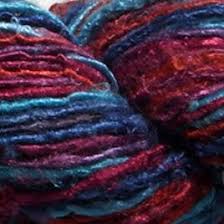Gm – The Priests Begin Their Ministry Leviticus 9: 1-24
The Priests Begin Their Ministry
Leviticus 9: 1-24
The priests begin their ministry DIG: What function is served by the various offerings in this service? Why do you think the sacrifice for Aaron’s sin was made before the sacrifice for the people’s sin? What is the significance of the fiery grand finale? What does that say about Aaron’s role in the process of restoring the people to a right relationship with God?
REFLECT: Do you think you can be your own high priest, offering sacrifices and dispensing with your pastor all together? Why or why not? Hebrews 7:11-28 tells us that Jesus is now our High Priest. How does that affect your spiritual journey?
On the eighth day the official priestly ministry began. The rabbis teach that the preceding week of the priestly dedication began on the twenty-third day of the twelfth month so that this eighth day was identical with the first day of the first month mentioned in 40:2 and 17 when the Tabernacle was erected. Up to this time, Moses functioned as the high priest, but now the priesthood will fall to Aaron and his sons. The elders of Isra’el served as witnesses to the inauguration. Moses then functioned as a prophet, because he had not written down the instructions yet. So Aaron immediately began his priestly duties by sacrificing a young bull calf without defect for his sin offering and a ram without defect for his burnt offering (Leviticus 9:1-2). The rabbis teach that because Aaron sacrificed a bull calf, God had forgiven him for the golden calf incident.
When the Tabernacle was erected, each of the twelve tribal leaders brought offerings for the dedication of the altar (Numbers 7:10-88). On the first day, every kind of sacrifice was offered except for a guilt offering that was intended for specific offenses, which at this point had not been committed. In addition, on the first day most kinds of animals were sacrificed except for birds, because it did not involve those who were poor. The order of their gifts corresponded exactly with the arrangement of the tribes encamped around the Tabernacle.649

First Aaron began his ministry by slaughtering a bull calf for his own sin offering. His sons brought the blood to him, and he dipped his finger into the blood and put it on the horns of the bronze altar. In the future, that would normally be done on the altar of incense (Leviticus 4:7). But at this point no one had entered into the holy place and defiled it, so it did not need cleansing. Then he poured out the rest of the blood at the base of the bronze altar. On the bronze altar he burned the fat, the kidneys and the covering of the liver from the sin offering, as God commanded. The flesh and the hide were burned up outside the camp. Normally the priests ate the meat of the sin offering, but because this was a special occasion, normal rules did not apply (Leviticus 9:8-11).
Then Aaron slaughtered a burnt offering for himself. His sons handed him the blood, and he sprinkled it against the bronze altar on all sides. They handed him the burnt offering piece by piece, including the head. He washed the inner parts and the legs and burned them on top of the burnt offering on the altar (Leviticus 9:12-14).
Afterwards there was an offering made for the people. Aaron sacrificed a male goat for a sin offering. That was for their sin nature. Then brought the burnt offering, a calf and a lamb – both a year old and without defect – and offered it in the prescribed way. Then he slaughtered an ox and a ram for a peace offering, and waved the breasts and the right thigh before God as a wave offering. Then a grain offering mixed with oil was offered. He took a handful of the grain offering and burned it on the altar, in addition to the morning’s burnt offering. Aaron and his sons took the sacrifices that Moses commanded to the front of the Tabernacle, and the elders of Isra’el came near and stood before God (Leviticus 9:3-7, 15-21).
The dedication process concludes with the official acceptance by ADONAI. Then Aaron lifted his hand toward the people and blessed them. The actual content of the blessing is not stated, but it may have been the priestly blessing in Numbers 6:24-26. ADONAI bless you and keep you; ADONAI make His face shine upon you and be gracious to you; ADONAI turn His face toward you and give you peace.
And having sacrificed the sin offering, the burnt offering and the peace offering, he stepped down. Then Moses and Aaron went into the Tabernacle together. When they came out, the Sh’khinah glory appeared to all the people. Fire came out from the presence of ADONAI and totally consumed the burnt offering and the fat portions on the bronze altar. On that day, the Sh’khinah glory appeared to authenticate the Levitical priesthood. Always a visible manifestation of the presence of God, that day the invisible God become visible to them. God showed His acceptance of an offering in the same exact dramatic way three more times (Judges 13:15-20; Second Chronicles 7:1-3). And when all the elders of Isra’el saw it, they shouted for joy and fell facedown (Leviticus 9:22-24).
Whenever you see the people of God near His throne or His presence in the Bible they always fall facedown (Genesis 17:3; Leviticus 9:24; Numbers 20:6; Joshua 5:14; Ezeki’el 1:28, 3:23, 44:4; Revelation 7:11, 11:16). What attitude does that suggest? How should our heart attitude be when we approach the throne of grace? When was the last time that you fell face down in worship of the LORD?




